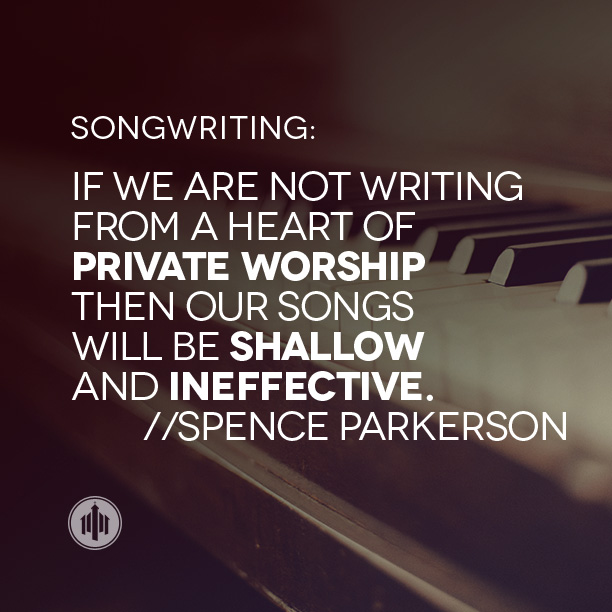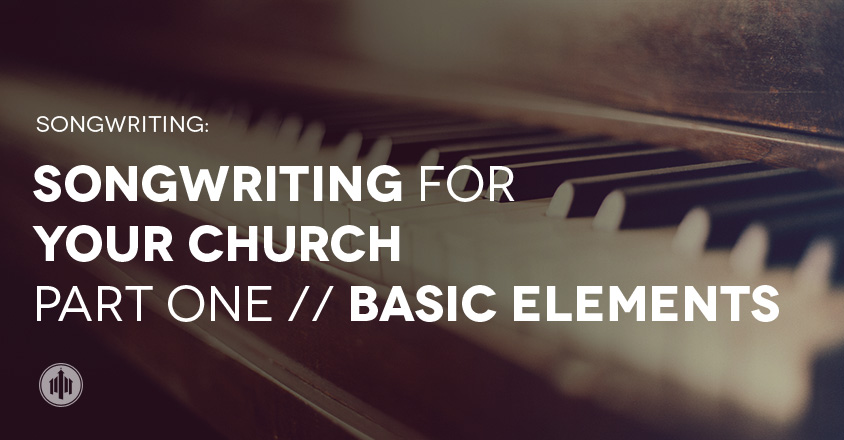Songwriting for the Church has to begin with the spiritual before it can move to the practical. If we are not writing from a heart of private worship then our songs will be shallow and ineffective. They will be absent of the power of the Holy Spirit because we are not in communion or in fellowship with Him. So it is imperative to understand where great worship songs come from before we attempt to write them. They come from a close, consistent, and transparent relationship with God. Now, with that being said… let’s get into the basic elements of what makes a great song great.
The Hook
Every song needs a strong hook! A hook can be the melody or it can be an instrumental part that catches the attention of the listener and is not easily forgotten. The hook is what attracts the listener to the song and identifies it. Here is the official definition: A hook is a musical idea, often a short riff, passage, or phrase, that is used in popular music to make the song appealing to “catch the ear of the listener.” The hook literally “hooks” the listener into the song and keeps them there. I try to make every section of the song have something that hooks or is “catchy”. I don’t want to overload the listener but at the same time, I want them engaged in every part of the song. If you are going to go this route, you need to be able to identify the “main hook” and give that it’s due recognition and let every other hook in the song support that one. Some examples of great hooks are 1) the guitar riff on Here With Us by CrossPointe Worship 2) the opening drum beat in Hosanna by Hillsong and 3) the guitar riff/ synth lead in This is Amazing Grace by Phil Wickham.
The Melody
Every song has a melody! The melody is the combination on notes and rhythm that identify the main musical parts in a song. Some of these can be instrumental as well as vocal. However, when referring to melody, one is mostly referring to the vocal pattern of the song. As I stated earlier, every song has a melody but that doesn’t mean every song has a “good” melody. A good melody will also serve as the hook. It will grab the listener’s ear and encourage them to engage. When writing worship music, having a strong melodic melody is so important! It is important not because we want to entertain our listeners, but because of what that strong melodic hook will carry. It will carry on it the Truth of the Gospel and the Truth of the Gospel is what transforms lives. Just think of the melody as being the glue that allows the truth of the lyrics to stick into the hearts and minds of the listeners. If the melody is weak, chances are what you are saying will be forgotten. A good way to test out your melody is to play your song for some of your non musical friends. If they catch the melody after the first time hearing the song then you have a pretty solid hook. A good example of a great melody is the chorus of 1) Ever Be by Bethel and 2) Good Good Father by House fires and 3) Burning on the Inside by CrossPointe Worship.
The Music
Music sets the emotional environment of the song. Its serves as a musical bed that the hook and the melodies are birthed out of. Songs can exist apart from having a musical bed (acapella), but all songs are music because the combination and succession of notes and rhythm wether sung or played… make music. Putting music to a song can truly make it come alive! The music can serve as a reinforcement for the lyrics. If you are wanting the listener to feel somber and reflective; the music can help reinforce that or even help to prepare them for that. If you are wanting your listener to feel joy and excitement; the music can help accomplish that as well. You always want to view the music and it’s arrangement as a “voice” in and of itself. Is the music speaking the same message as your lyrics? If not, the listener will have a problem truly getting the complete message that your are trying to communicate. If so, there will be a power in your message that mere words could never express. A great example of how music can breathe life into a song can be heard in 1) Alive by Hillsong Young and Free and 2) Unstoppable God by Elevation. More instrumentation isn’t always what the song needs to speak. Sometimes less is more. A great example of this is 1) Death Be Not Proud by Audrey Aussad and 2) Oh God by Citizens.
The Content
Unlike pop music, the content of worship music is vitally important. It is where the real power lies. “For the word is alive and active. Sharper than any double-edged sword, it penetrates even to dividing soul and spirit, joints and marrow; it judges the thoughts and attitudes of the heart.” (Heb. 4:12) Think about that for a second. The Word is alive… and when the words of our songs are the Word… our songs are alive too! This verse also speaks of the ability of the Gospel to dive into the soul of a person and change their life forever. Now we are seeing the gap between pop songs and worship songs broaden. Worship songs carry SO much more weight because they deal with eternity. They have the ability to help transform a person from death to life by the power of the Holy Spirit. So we must be very careful and serious about the content of our songs. The message must be clear and biblical. In our attempts to be creative, we can never sacrifice the integrity of the Gospel. We must remember that it is not our creative metaphors, word olympics, or artsy illustrations that hold the power in our lyrics. It is the TRUTH of the Gospel and the Truth can never be compromised when we plan to put our songs on the lips, hearts, and minds of our congregation. Therefore we must labor over our lyrics. We must pray over our lyrics. We must search the scriptures for our lyrics. We must critique our lyrics and judge their accuracy. We must live our lyrics. Some examples of great lyrics are obviously some of the timeless hymns such as 1) It Is Well 2) In Christ Alone and 3) How Great Thou Art. Some more recent ones include 1) Ever Be by Bethel 2) Greater by CrossPointe Worship and 3) Oceans by Hillsong United.
The Dynamics
Dynamics are extremely important in a song. When you are telling a story, you start with the background info first and begin building the story around a certain theme, idea, or moment. In the same way, dynamics help the songwriter tell the story better. Think of the dynamics as the punctuation marks throughout the song. You see, each song takes the listener on a journey from one thought to the next and from one emotion to the next. There are certain parts of the song that are the high points and other parts serve more as the supporting roles. It is important to identify these parts and know clearly the journey you want your listeners to take. If not, you will not use dynamics in an effective way. So what are dynamics? Dynamics can be musical, such as building the musical instruments in a way to create tension or to create a release. Musical dynamics can also create a feeling of openness and reflection, or they can create a moment intensity and urgency. Essentially, the musical dynamics can help the songwriter create whatever mood they want. However, musical instruments aren’t the only way to create dynamics. The melody should have dynamics as well. There should be a progression from your beginning melody to the ones that follow. They all should flow easily together and work together taking the listener from point A to point B. In short, your strongest melody should not be first because it only goes downhill from there. Your lyrics should have an element of dynamics to them as well. Normally your verses serve as a supporting role to your chorus. They prepare the listener with the thoughts and info they need to get the chorus. The chorus is normally the main idea of the song and the bridge often serves as the exclamation mark to the chorus. Some examples of good dynamics are 1) With Everything by Hillsong 2) The Last Word by Elevation Worship and 3) Deeper Waters by CrossPointe Worship.
 The Nugget
The Nugget
This one is my favorites because it always reminds me of who the song belongs to and where it comes from. The nugget is that first moment of inspiration that is given to us by the Holy Spirit. It can be a word. It can be a certain scripture. It can be a phrase or an idea. It can be a feeling or an emotion. It can be a melody or a musical riff. It can be a chord progression or a concept. It can come from moments of conviction, challenge, or encouragement. Or it can just be a moment of spontaneous praise resulting from an encounter with God. These nuggets are the birthplace for our songs. However, many times we are too busy or too preoccupied to notice them. And if we notice them, we are unwilling to put in the work and effort to seeing these nuggets develop into strong songs. Songwriting is work and it takes tremendous effort to see something manifest from inspiration to creation. Their is a craft to it just like pottery, carpentry, or painting. Sometimes you will need to go through 6 or 7 drafts of lyrics and change the melody 3 or 4 times before the song is complete. Again, as songwriters we are the vessels for these songs to manifest themselves. It is our responsibility to discover them. shape them, cultivate them, and deliver them. Remember, these songs are the Lord’s. They are His property; He is merely entrusting us with what belongs to Him. It is our responsibility to be faithful stewards (1 Cor. 4:1-2) of our Father’s property and do our best with what He gives to us.


